In the vastness of nature, there exists a beautiful and mysterious creature, covered in golden fur, with intelligent eyes that reveal endless wit and agility. They are the largest species of fox in the world, surpassing our understanding.
Arctic Fox, up to 120cm long
The Arctic fox is a species that inhabits the Arctic region, being one of the largest fox species in the world with a length of up to 120 cm, which is almost equivalent to that of a gray wolf (105-150 cm).
Arctic foxes typically live in the cold and desolate Arctic areas, which helps them adapt to the extremely harsh environment. They have thick white fur, a feature that helps keep them warm in frigid conditions.
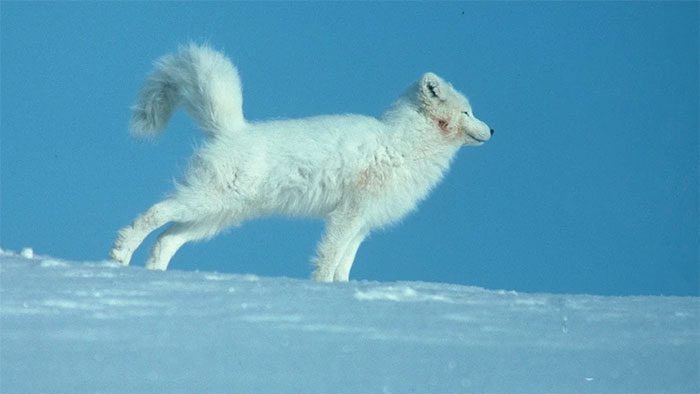
The Arctic fox is relatively large but its weight is relatively light. (Illustrative image).
At the same time, the fur of the Arctic fox is one of their important survival tools, helping them camouflage effectively.
With a body length of 120 cm and a long tail, the Arctic fox is relatively large but its weight is quite light, allowing it to move gracefully over thick ice.
The Arctic fox tends to live alone and is highly territorial, often roaming over a vast territory. They primarily hunt marine mammals as their main food source, such as seals and seabirds. Arctic foxes have keen hearing and smell; they are also excellent divers and can search for food underwater, making them highly adaptable animals.
The breeding season for Arctic foxes usually occurs in spring, with females digging dens in the ice to give birth to a litter of 2-12 pups. At birth, Arctic fox pups are usually born with soft brown fur, which gradually turns white as they grow to adapt to the Arctic environment.
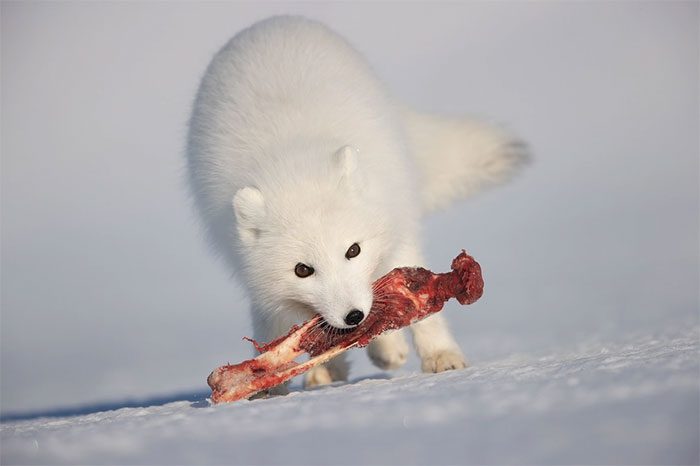
The breeding season for Arctic foxes usually occurs in spring.
With global warming, the ice in the Arctic is melting at an increasingly rapid rate, posing challenges to the habitat of the Arctic fox.
The degradation of habitat and the rise of predators threaten the survival of the Arctic fox. Therefore, protecting the ecological environment of the Arctic and mitigating climate change is crucial to safeguard the survival of this captivating fox species.
Gray Fox can weigh over 10kg
As one of the largest fox species in the world, the gray fox is an intriguing and mysterious animal. It can weigh over 10 kg, a rather impressive weight for a fox.
The gray fox is known for its gray fur, attractive appearance, and bushy tail. This gray coat helps the gray fox blend in better with its natural environment, providing excellent camouflage. Additionally, the gray fox has a relatively large body structure, strong limbs, and sharp claws that enhance its hunting capabilities.
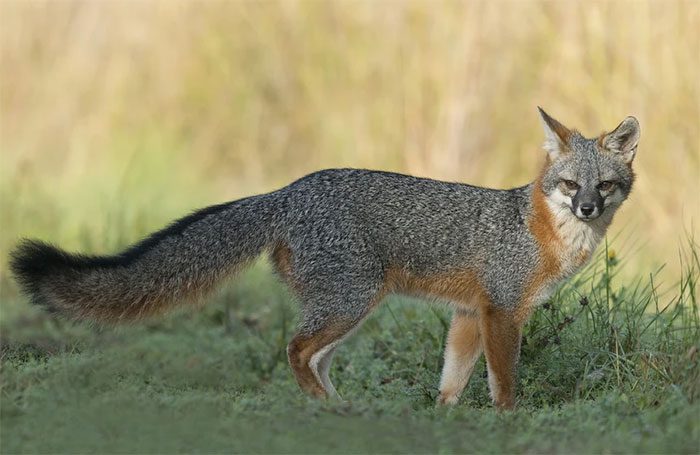
The gray fox is an intriguing and mysterious animal. (Illustrative image).
The gray fox is primarily nocturnal and performs better at night, which is why they are also famous for hunting nocturnal animals. They often prey on small mammals such as rabbits, birds, and mice. The gray fox has excellent hearing and smell, enabling it to track and detect prey in the dark. They commonly search for food and shelter in shrubs and tree hollows, with vast forests and open grasslands being their favorite habitats.
The gray fox exhibits superior intelligence and adaptability in movement and hunting. They often live alone or in small groups during the breeding season. After a successful breeding season, female gray foxes give birth between June and July, typically to 5 to 7 pups. The pups will rely on their mother for about two months before learning to live independently.
Gray foxes face several threats that pose challenges to their survival. Habitat destruction, pesticide pollution, and illegal hunting are among the reasons for the decline of gray fox populations.
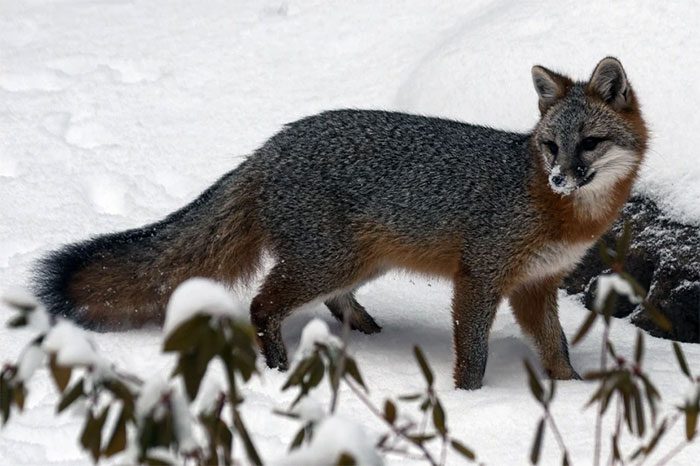
The gray fox has excellent hearing and sense of smell. (Illustrative image).
Moreover, climate change has also impacted their habitat. Fortunately, gray fox populations remain relatively stable, and they are legally protected in many countries from overhunting and habitat destruction.
Red Fox, body length can reach up to 90cm
The fox is an intelligent, agile animal widely distributed around the world, but one of the most striking species is the red fox. The red fox is one of the largest fox species in the world and has attracted attention and research for its beautiful appearance and captivating traits.
The red fox (Vulpes vulpes) is a species that can reach a length of 90 cm. They have a slender and elegant body, with a long, smooth tail, sometimes exceeding half the length of their body.
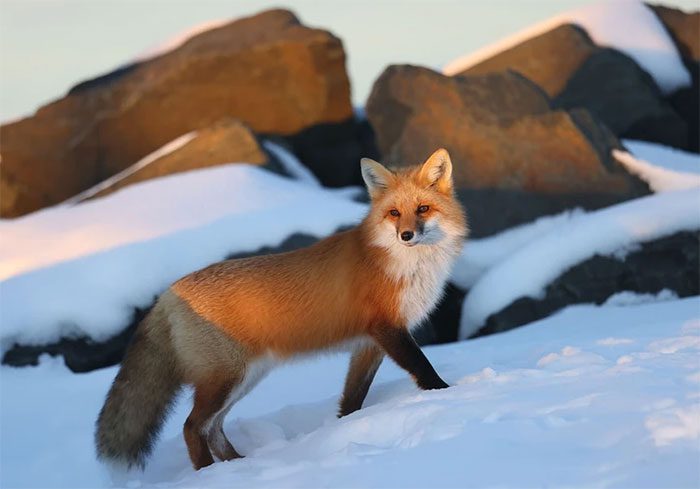
The red fox adapts well to various environmental conditions. (Illustrative image).
The red fox has a relatively small head with oval-shaped eyes and forward-facing ears. It has a well-developed sense of smell and hearing, which aids in hunting and awareness. Unique features of the red fox also include a pointed snout and sharp teeth, which help it prey on small mammals, birds, insects, and fruits.
The red fox adapts well to various environmental conditions and is widely distributed in Europe, Asia, and North America. They primarily inhabit diverse environments such as forests, grasslands, deserts, and agricultural lands. Red foxes are nocturnal animals, primarily hiding in burrows, bushes, or underground dens to rest during the day and are active at dusk and dawn. They create their dens by digging or taking over the nests of other animals.
Red foxes have a high adaptability and can withstand extreme temperatures as well as changes in the availability of food sources in different regions. Red foxes are also known for their clever hunting strategies, such as digging up the burrows of rodents to catch prey. Additionally, red foxes have established a symbiotic relationship with humans, feeding on rodents and pests found in agricultural land.
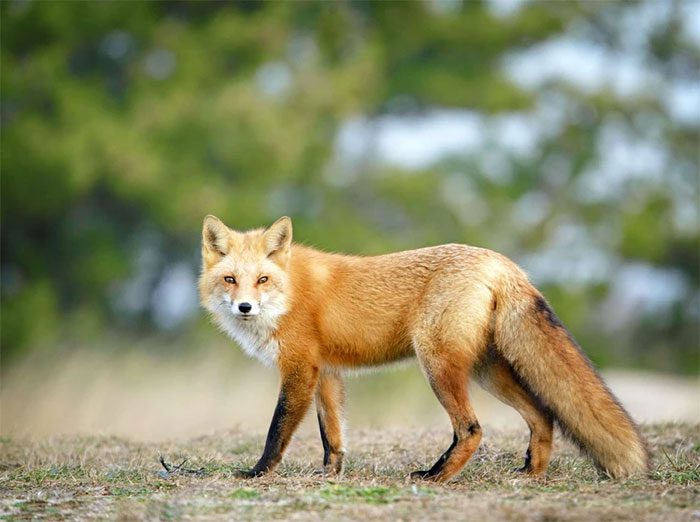
The red fox is also known for its clever hunting strategies. (Illustrative image).
The red fox plays a vital role in the ecosystem. They are one of nature’s controllers, maintaining ecological balance by regulating populations of small mammals and birds. Red foxes are also a food source for many predators like gray wolves, hawks, and large cats. Therefore, the existence of red foxes is crucial for maintaining the stability of the natural ecosystem.


















































